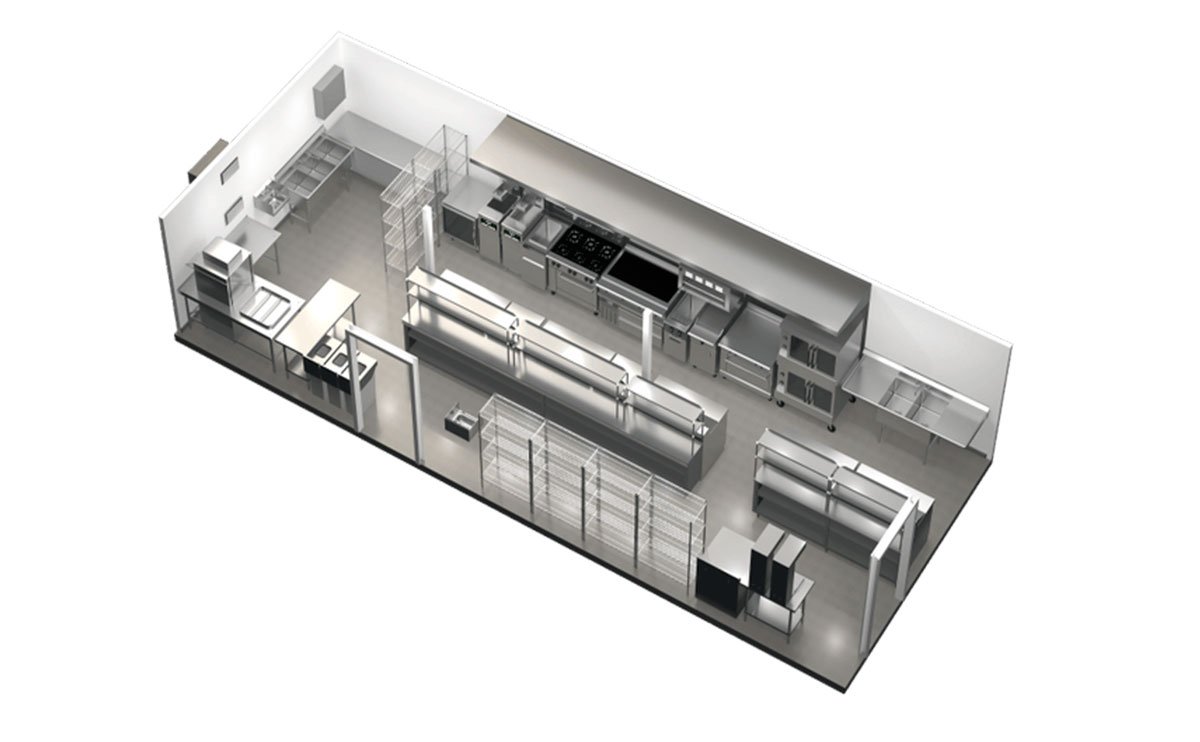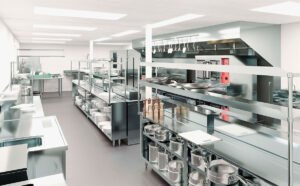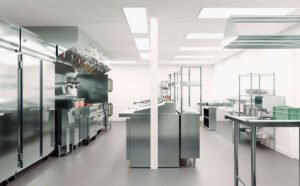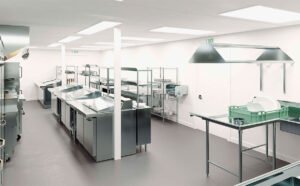Designing a professional kitchen is a complex task, but it is essential to create a functional and efficient space where chefs can prepare delicious food. Here are some tips to help you design a professional kitchen:
Professional Kitchen LayoutOpens in a new window
contekpro.com
Professional Kitchen Layout
1. Consider the workflow
One of the most important things to consider when designing a professional kitchen is the workflow. Chefs need to be able to move around the kitchen easily and efficiently, without having to cross paths all the time. The kitchen should be designed in a way that minimizes the amount of walking and carrying that chefs have to do.
2. Create work zones
Another important consideration is to create work zones. This means grouping together equipment and supplies that are used for similar tasks. For example, the cooking zone might include the stove, oven, and grill. The prep zone might include the sink, cutting boards, and knives. The dishwashing zone might include the dishwasher, sink, and drying racks.
3. Choose the right equipment
When choosing equipment for a professional kitchen, it is important to consider the following factors:
The type of food you serve: Some foods require specific equipment to prepare. For example, if you serve pizza, you will need a pizza oven.
The volume of food you serve: If you have a large operation, you will need equipment that can handle a high volume of food.
Your budget: Commercial kitchen equipment can be expensive. It is important to choose equipment that fits your budget and needs.
Professional Kitchen Equipment-opens in a new window
Professional Kitchen Equipment

4. Layout the kitchen efficiently
When laying out the kitchen, it is important to consider the following factors:
The flow of traffic: The kitchen should be designed in a way that minimizes the amount of traffic congestion.
The placement of equipment: Equipment should be placed in a way that maximizes efficiency and minimizes the amount of walking and carrying that chefs have to do.
The ergonomics of the kitchen: The kitchen should be designed in a way that is comfortable and safe for chefs to work in.
5.Install proper ventilation
Proper ventilation is essential in any kitchen, but it is especially important in a professional kitchen. Ventilation helps to remove cooking fumes, smoke, and heat from the kitchen. This helps to improve the air quality and reduce the risk of fires.
6. Consider the lighting
Good lighting is essential in any kitchen, but it is especially important in a professional kitchen. Chefs need to be able to see clearly so that they can prepare food safely and accurately. The kitchen should be designed with a combination of task lighting and ambient lighting.
7. Choose the right flooring and surfaces
The flooring and surfaces in a professional kitchen need to be durable, easy to clean, and slip-resistant. Common flooring materials include concrete, ceramic tile, and vinyl. Common surface materials include stainless steel, granite, and quartz.
8. Create storage space
A professional kitchen needs to have plenty of storage space for food, ingredients, and equipment. Storage space can be created in the form of cabinets, drawers, shelves, and racks.
9.Install safety features
Safety is essential in any kitchen, but it is especially important in a professional kitchen. Some important safety features to include in a professional kitchen are:
Fire extinguishers: Fire extinguishers should be placed in convenient locations throughout the kitchen.
Non-slip flooring: The flooring in the kitchen should be slip-resistant to prevent accidents.
Emergency exits: The kitchen should have multiple emergency exits in case of fire or other emergencies.
10. Hire a professional kitchen designer
If you are not sure how to design your professional kitchen, you can hire a professional kitchen designer. A professional kitchen designer can help you create a kitchen that is functional, efficient, and safe.
By following these tips, you can design a professional kitchen that will help you and your chefs prepare delicious food for your customers.















